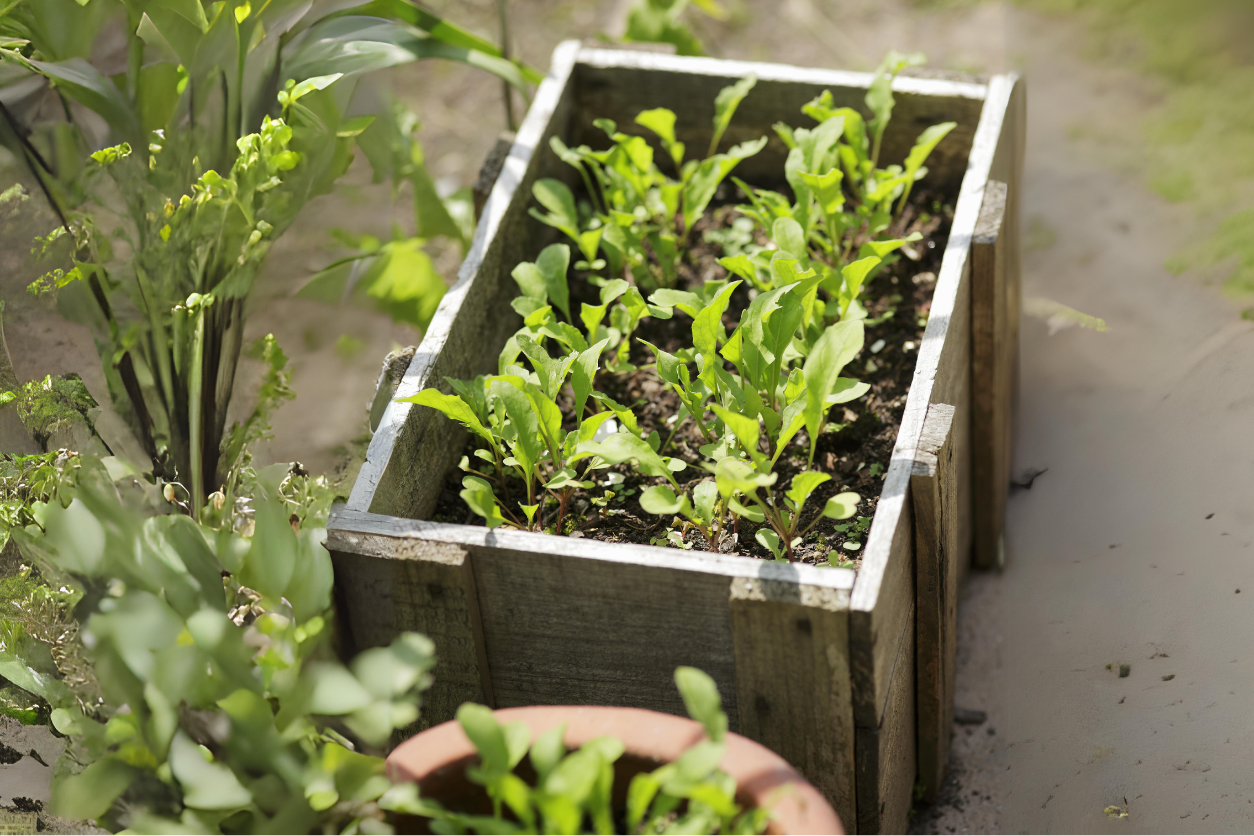Your Simple Guide to Growing Arugula

If you’re a fan of the peppery punch that arugula adds to salads, sandwiches, pizzas, and pasta dishes, why not try growing your own? Arugula (Eruca sativa) is a fast-growing leafy green that’s ready to harvest in just 30 to 50 days. It’s perfect for those who love quick results in the garden. This easy-to-grow vegetable thrives in the cool temperatures of spring and fall, and it’s a great addition to any home garden. Here’s how to grow arugula at home for your fresh salads.
Related: How To Grow Your Own Vegetable Garden
What Is Arugula?
Arugula is part of the Brassica family, which includes other well-known veggies like kale, broccoli, and cauliflower. As an annual plant, it completes its life cycle in a single growing season. Arugula plants typically reach heights of 1 to 3 feet and spread about 6 to 12 inches. With their white flowers and blue-green foliage, they add a lovely visual element to your garden. One of the best things about arugula is its low-maintenance nature, making it an excellent choice for beginner gardeners.
Arugula is quite versatile when it comes to planting locations. You can grow it in containers, raised beds, or directly in the ground. The key is to find a spot that gets plenty of sunlight—either full sun or partial sun will do the trick. Remember, it’s a good idea to rotate arugula with other crops from the Brassica family to keep the soil healthy and reduce the risk of pests.
How To Grow Arugula
For the best results, sow arugula seeds in the spring and again in the fall. Arugula isn’t a fan of the summer heat, which can cause it to bolt, or go to seed, instead of producing those tasty leaves. Plant seeds about ¼ inch deep and space them an inch apart. If you’re planting in rows, keep each row about a foot apart. To enjoy a continuous harvest, sow seeds every two to three weeks during the growing season.
Arugula prefers well-draining, loamy soil with a pH between 6.0 and 7.0. Enrich your soil with compost to ensure it’s full of nutrients. While arugula is tolerant of various soil conditions, it thrives in nutrient-rich environments. Keep the soil consistently moist but not waterlogged—arugula has shallow roots and needs regular watering to grow well.
Arugula is also perfect for container gardening. Use a 12-inch terra-cotta pot filled with good-quality organic potting soil. After moistening the soil, sprinkle the seeds over the surface and lightly cover them with more soil. Start the container in a shady spot outdoors while the seeds germinate, then move it to a sunny area. Keep the soil moist as the plants grow. Since arugula is an annual, there’s no need to re-pot it.
Arugula is ready to harvest when the leaves are about 3 inches long. Use scissors to snip the outer leaves or pick them by hand, ensuring you leave the crown intact for continued growth. Depending on the variety, arugula can mature in 30 to 50 days. When snipping, leave the plant’s crown intact to encourage regrowth. For the best flavor, enjoy the leaves as soon as you pick them.
Pro tip for quicker regrowth: Avoid harvesting more than a third of the plant at one time
Popular Arugula Varieties
‘Astro’ grows quickly and is ready for baby-leaf harvest in just three weeks. It has a mild flavor and the white flowers are edible, though the leaves become more intense if left to mature.
‘Red Dragon’ is known for its striking oak-shaped leaves with a purple central vein, ‘Red Dragon’ adds a visual flair to salads. It offers a mild but spicy flavor.
‘Sylvetta’ has long, narrow leaves, ‘Sylvetta’ starts with a nutty sweetness and ends with a peppery kick. Baby leaves are ready in 35 days, with full-size leaves maturing in 50 days.
True to its name, ‘Wasabi’ is an extra spicy variety, perfect for adding a punch to Asian dishes or any meal needing a bit of heat.
Companion Planting with Arugula
Companion planting can benefit your arugula crop by promoting growth and deterring pests. Consider these companion plants:
- Beets: Since arugula has shallow roots and beets grow underground, they coexist well in the same space. The beet leaves can also provide shade for arugula.
- Celery: Both are cool-weather crops that thrive in well-draining soil. Celery fronds offer shade to arugula plants.
- Mint: Known for repelling pests like aphids and flea beetles, mint is a great companion. However, keep it in a container to prevent it from overtaking your garden.
Caring for Your Arugula
Arugula loves full sun and needs about six hours of sunlight daily. In warmer climates, some partial shade can help prevent bolting. Ideal temperatures for growing arugula range from 40°F to 70°F, and it can even withstand a bit of frost. Interestingly, colder temperatures can mellow its spicy flavor, adding a hint of sweetness to the leaves.
If your soil is already nutrient-rich, additional fertilization isn’t necessary. However, if you notice pale leaves, it might be a sign of nutrient deficiency. In that case, apply a balanced 10-10-10 fertilizer at half strength, following the product’s instructions.
Arugula is generally resistant to diseases, but it’s still important to monitor your plants. Poor air circulation can lead to powdery mildew, while pests like aphids, flea beetles, slugs, and cabbage worms may be attracted to arugula. Check your plants regularly, pick off any pests, or spray them with water to keep them at bay.